Kwanzaa
Desemba 26 – Januari 1
Background and History
Kwanzaa is a lively and enriching, seven day celebration of the Black Value System called the Nguzo Saba. Nguzo Saba is in the Kiswahili language of East and Central Afrika and literally means “Seven Pillars.” It is further translated to mean “Seven Principles.” These seven pillars or principles are the foundations upon which Afrikan culture rests. These seven basic values can be found in practice throughout the various Afrikan groups that make up the Diaspora and can be traced back to antiquity, existing long before the establishment of the first european civilization. It is estimated that over 30 million people celebrate Kwanzaa today.
These basic Afrikan values and perspectives can still be found alive in Afrikan communities throughout the americas and the Caribbean. This survival is despite the relentless efforts by european forces to destroy all remnants of Afrikan culture and identity throughout the period of Afrikan captivity called “chattel slavery.” This relentless effort, called racism, still continues today thus making the celebration of Kwanzaa a clear act of cultural self–determination and pride. Kwanzaa is in the Afrikan harvest celebration tradition. Kwanzaa means “First Fruits” and is celebrated from Desemba 26th through Januari 1st. It was created in 1966 by Dr. Maulana Karenga and the US organization. It is celebrated to heighten the recognition and understanding of our seven basic and ancient Afrikan values and provide a reinforcing, uplifting cultural celebration for Black people. Kwanzaa is a non-religious and a non-heroic celebration.
Nguzo Saba
The seven Black values celebrated during Kwanzaa are:
- Umoja (unity)
- Kujichagulia (self-determination)
- Ujima (collective work and responsibility)
- Ujamaa (cooperative economics)
- Nia (purpose)
- Kuumba (creativity)
- Imani (faith)
How it is Celebrated
Each day of Kwanzaa is dedicated to one of the Nguzo Saba. Activities of that day reflect the principle of that day. The basic items used for Kwanzaa are the Mishumaa Saba (seven candles-3 red, 1 black and 3 green), a Kinara (candleholder) for seven candles, a Mkeka (straw mat), a Kikombe cha Umoja (Unity Cup) and Zawadi (gifts), given on the last day. The Mishumaa Saba are arranged in the Kinara- 3 red on the left, 1 black in the middle and 3 green on the right. On each day of Kwanzaa, a candle is lit for that day. On the 1st day, the innermost black candle- Umoja- is lit and words are shared about Unity. Then, the Kikombe cha Umoja is passed to all present. Each person drinks from it and strongly says “Harambee!“ meaning “We pull together!“ On the 2nd day, the Umoja candle is lit, then the innermost red candle- Kujichagulia- then sharing about Self-Determination. The next day, the previous candles are lit, then the innermost green candle- Ujima- then sharing. Continue outward each day, alternating colors, until all colors are lit on the 7th day-Imani. On the last day, a great celebration is held between many families called the Karamu (feast) . At the Karamu, the community comes together, eats and participates in activities centered on the Nguzo Saba.
|
|
|
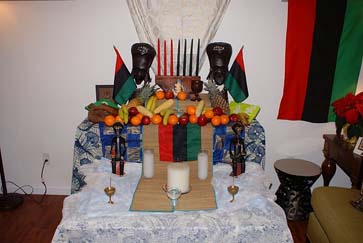
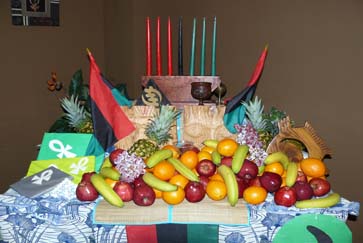
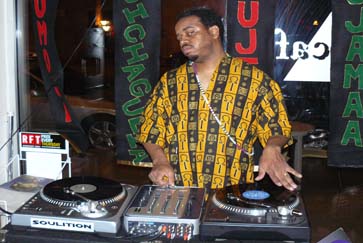
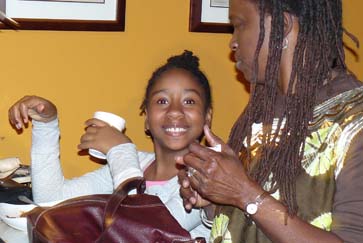
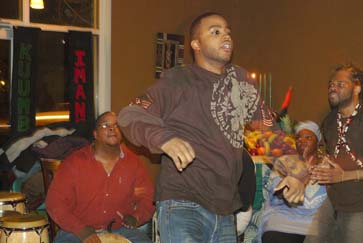
|





